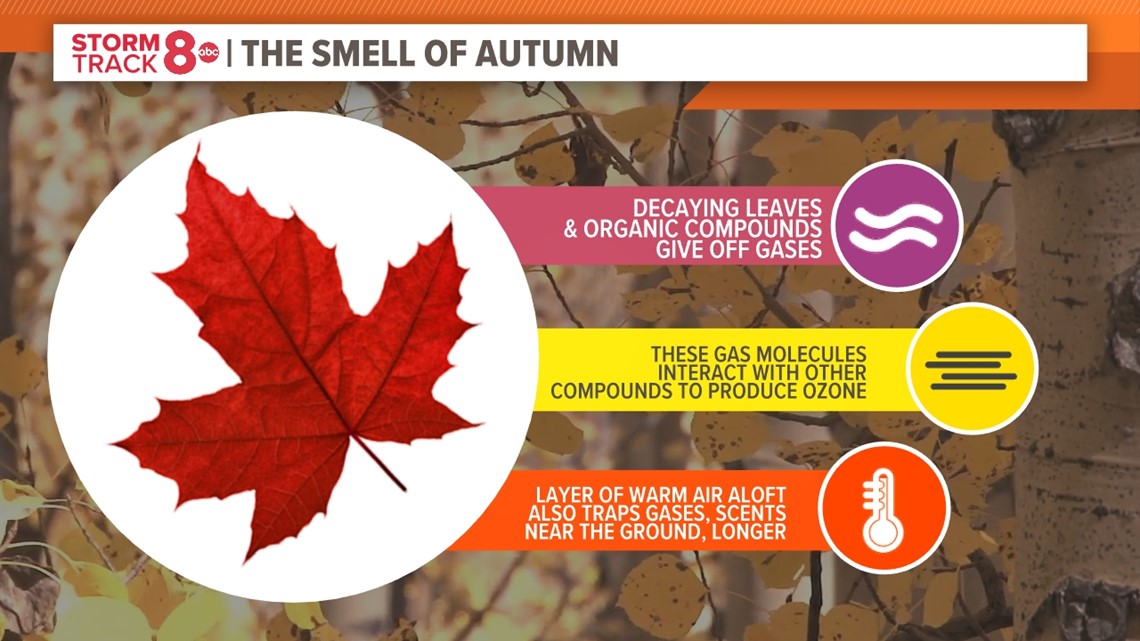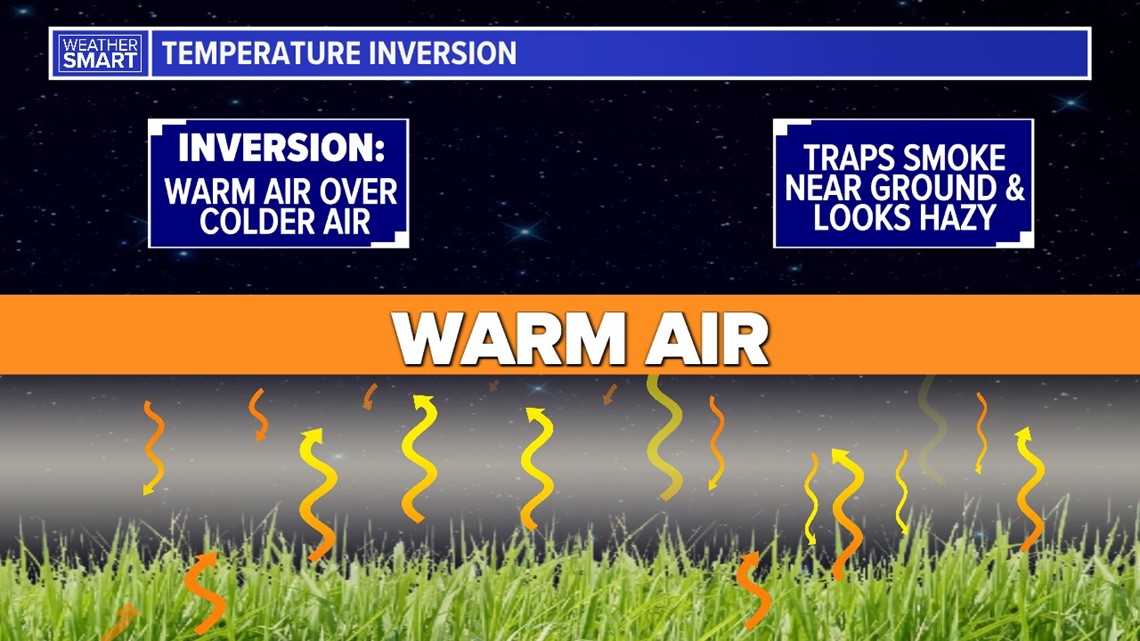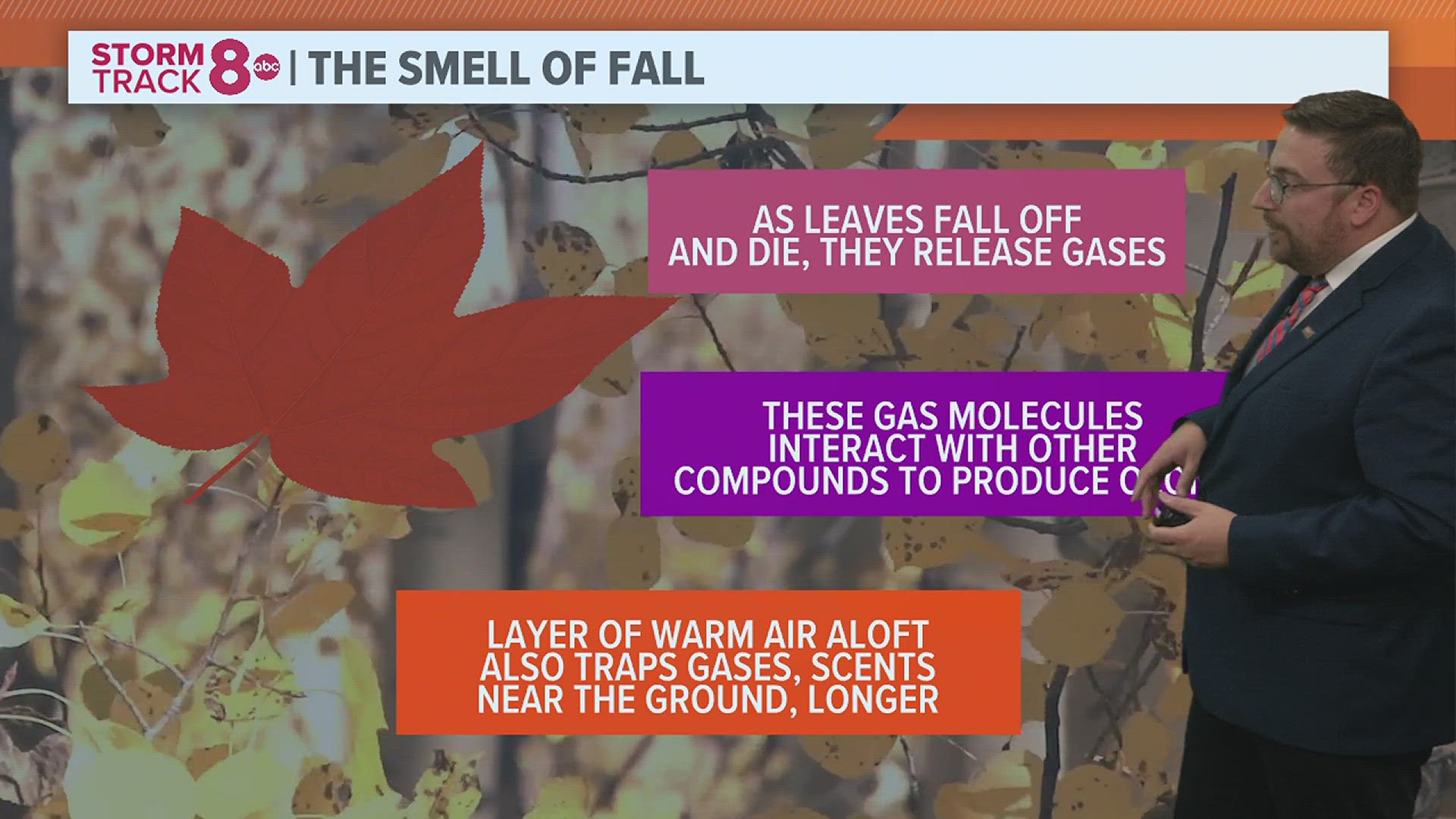MOLINE, Ill — Pumpkin spice, pumpkin pie, and every other "pumpkin" scent you can think of is in the air right now. This is just a whole host of sweet autumn scents that we'll be enjoying for the most part in the next several weeks. So, what is it that makes autumn such an aromatic season, especially compared to spring and summer? Let's dig in!
A pleasant smell from death and decay
I know, that doesn't seem possible, but indeed that is what's going down! As the sun angle decreases this time of year along with the temperatures, trees begin to shut down, stopping the process of photosynthesis which is what gives leaves their green color. Once this process stops, leaves begin to turn colors, die on the limbs, and eventually fall to the ground. These leaves also emit different gases that have been stored inside their pours once this process is underway and decay begins. Other organisms and plant life on the ground also begin to break down and decay, releasing their own gasses. These combine with other pollutants and particles in the air to produce the fall-like aroma you smell.
What helps amplify these aromas this time of year is the fact that our senses are not competing with a whole lot of other high-powered scents. In the spring, we smell blooming flowers and other budding plants. In the summer, usually, the only smells outside are unpleasant ones, including rotting garbage and dead wildlife. Come fall, those scents get crowded out as something more widespread, such as leaf decay in this case, takes over.


The atmosphere plays a role, too
Our atmosphere changes several times each day. One important change at night involves an inversion. What is that?


Simply put, typically the air temperature decreases as you go from the ground further up into the atmosphere. However, at night, this inversion, which is essentially a layer of warm air sandwiched between two layers of cooler air, prevents temperatures from falling completely through that path upward. Instead, you go from cool temperatures at the ground to slightly warmer temperatures just above the ground, and then back to cooler temperatures above this inversion layer.
This type of setup can also trap these gases being released from dying and decaying vegetation, allowing them to hang around in the air substantially longer than most other aromas.
So, enjoy those lovely autumn scents while they are around for the next few months! After all, there isn't much to smell in the winter.
Have a question that you would like me to answer for an upcoming Ask Andrew segment? Submit it, here.

